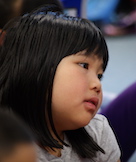Gail Boushey

Over at Literacy Hub, Emily Temple compiled research to estimate the number of books we will probably read over our lifetime. Take a moment to view the data in list or chart form and check out the number next to your age and reading habits.
I was surprised by the number next to my age. It put into perspective the fact that reading is a gift of time and titles. I feel a sense of urgency to be a voracious reader, to make and keep a list of books that I think I will love, that will stretch me, that will soothe my soul, and that will help me be a better person and teacher.
We won’t be with our students for their whole lives. But we’ll be with them for a few months, so we need to make sure the books we read, recommend, and have in the classroom library are well worth their time. That way they will be not only capable, but inspired to read for a lifetime.
News from The Daily CAFE

Math Matters . . .
Using Open-Ended and Closed-Ended Questions Purposefully*
It is important to understand the benefits and drawbacks of each as we purposefully plan and craft the questions we will use in our lessons.

CAFE Connections . . .
Expanding Vocabulary–Falling in Love with Words*
Chandra Reiners and her sixth-grade students are falling in love with their word wall words.

Regarding Research . . .
6 Necessities for Reader Growth and Motivation
The research is clear. Here are 6 things students need every day and 3 things we can focus on to help.

Focus on Health . . .
So Many Lessons to Learn
Carol Moehrle reflects on all the learning involved in growth.





